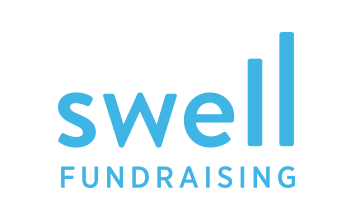The nonprofit event planning process can be challenging — reserving a venue, finding entertainment, and securing enough registrations to cover costs can all be stressful activities. However, finding corporate sponsors can significantly reduce your stress and ensure more revenue goes directly toward your mission.
Corporate sponsorships help cover event-planning costs and introduce your nonprofit’s mission to a new audience. Sponsorships also benefit businesses by improving their public image and helping them appeal to philanthropy-minded employees and customers.
Recruiting corporate sponsors requires careful planning and personalized outreach. In this guide, we’ll cover these tips for securing more sponsorships:
- Leverage existing connections.
- Create compelling, personalized packages.
- Remove roadblocks.
Corporate sponsorships won’t just help with one-time event planning — when you cultivate these relationships, they can offer long-lasting mutual benefits. Let’s explore some ways to effectively find new sponsors.
1. Leverage existing connections.
Tap into the power of your local community and your nonprofit’s current stakeholders, such as volunteers, donors, staff members, and board members.
Leveraging pre-established relationships can help break the ice and make your sponsorship outreach more natural. Use the following strategies to emphasize existing connections when seeking new sponsors:
-
Ask local businesses. Nearby businesses in your area are probably happy to support local nonprofits, especially when their mission and values align with yours. Reach out directly to local businesses and showcase your sponsorship program as an opportunity to support a charitable cause in the community.
-
Ask current supporters who are business owners or leaders. You may have current donors or volunteers who are business owners themselves or hold leadership positions at corporations. Ask if they’d be interested in taking their support to the next level by helping make your events a success.
-
Ask current supporters to help promote your sponsorship opportunities. Even if current supporters can’t become event sponsors themselves, they may be interested in helping to promote your sponsorship opportunities. Recruit current volunteers, advocates, and donors to share information about your sponsor program on their social media pages.
You can also conduct prospect research to find potential event sponsors both within and outside your current audience. Prospect research will help you identify companies or business leaders in your community who have the willingness and capacity to support your events. Prospecting tools can assess your nonprofit’s current event sponsors to find common traits and recommend businesses that have similar characteristics.
2. Create compelling, personalized packages.
According to NXUnite’s nonprofit event planning guide, giving yourself plenty of time during the preparation process ensures you won’t feel rushed or overwhelmed. It also allows you to fully think through your sponsorship packages to ensure they’re as compelling as possible.
Create enticing packages by taking these steps:
-
Outline the purpose and goals of your sponsorship program. For example, determine how much funding you’d like to raise from sponsors or how many sponsors you’d like to engage in your program. Decide what sponsors’ donations will go toward, whether venue rental, food, security, entertainment, merchandise, etc. Setting these internal goals will help you be more intentional about reaching out to the right sponsors.
-
Describe the benefits sponsors will receive. Capture potential sponsors’ attention by highlighting the specific marketing and PR benefits they’ll access. For example, you might feature sponsors’ logos on your event promotional materials, such as flyers, social media posts, emails, and branded merchandise. If you’re using email or social media to promote your event, let sponsors know how large those digital audiences are to give them a sense of your marketing reach.
-
Use your nonprofit’s donor data to spotlight your audience’s demographics. Tell prospective sponsors about your current audience and the demographics they can reach by sponsoring your event. For example, let’s say you’re trying to recruit a local sporting goods store to promote your fundraising 5K. Let the potential sponsor know that your event typically sees a strong turnout from active individuals in the community, which is their target audience.
-
Highlight impact. Pull data from past events to show sponsors how much more your nonprofit can raise with corporate support. Connect your fundraising efforts to tangible impact. For example, let sponsors know that your $20,000 donation total from your previous event allowed you to renovate your nonprofit’s community center.
-
Address potential sponsors’ corporate social responsibility goals. Research your prospective sponsors thoroughly ahead of time to understand their current corporate philanthropy initiatives, organizations they support, and events they’ve sponsored in the past. Present your sponsorship opportunity as a way for each business to further its internal corporate social responsibility objectives to better engage its employees and customers.
-
Set varying sponsorship levels. Not all sponsors will be able to contribute at the same level. Appeal to a variety of sponsors’ needs by offering multiple sponsorship levels. Determine sponsorship levels based on how much you’re looking to raise for your event and how many sponsors you think you can recruit. For example, perhaps you want to raise $15,000 to support your event. You could set sponsorship levels at $500, $1,000, and $3,000. Then, reach out to a handful of businesses that are potentially at the $3,000 level, several at the $1,000 level, and multiple establishments at the $500.
Organize these elements into branded, well-designed packets or PDFs to distribute to potential event sponsors. Personalize each packet with the business’s name and logo to provide even more of a personal touch.
3. Remove roadblocks.
Make it as easy as possible for businesses to say yes to your sponsorship opportunities by reducing barriers to participation. Simplify the sponsorship process with the following tips:
-
Be transparent. Provide details upfront about your nonprofit’s finances, where you direct funding, and your successes and challenges. Include this information in your sponsorship packets so potential donors have everything they need to make an informed decision.
-
Offer multiple ways for sponsors to engage based on their preferences. For example, in addition to the sponsorship opportunity, you might highlight opportunities that each business’s employees can get involved with, like corporate volunteering or peer-to-peer fundraising.
-
Engage in two-way communication. Make sure potential sponsors have access to your contact information so they can reach out with any questions about the program.
-
Make it easy for sponsors to submit promotional materials. Let sponsors send you their logos, brand colors, and other branding specifics via email or an online portal.
Show potential sponsors the value of a long-term partnership with your nonprofit by offering tips to enhance their other corporate philanthropy initiatives, such as matching gifts or volunteer grants. For example, 360MatchPro’s corporate giving statistics show that 96% of employees strongly prefer that their company matches gifts made directly to a nonprofit, rather than only matching donations through a workplace giving platform.
Ensure your nonprofit offers a matching gift tool with autosubmission functionality — this allows donors to automatically submit their matching gifts to your nonprofit without having to go through multiple platforms.
When businesses see how easy it is to engage in corporate philanthropy initiatives, they’ll be more open to event sponsorships and other engagement opportunities.
After recruiting your sponsors, give them a positive experience to ensure their support for future events. Steward your sponsors by showing your gratitude via thank-you letters and phone calls as well as social media posts and email blasts. Exceed their expectations by not only fulfilling all agreed-upon obligations but by personally meeting with them and asking for their feedback.
When current sponsors have a great experience, they may even promote your program to other local businesses, growing your efforts to even greater heights.
Guest Author: Adam Weinger
 Adam Weinger is the President of Double the Donation, the leading provider of tools to nonprofits to help them raise more money from corporate matching gift and volunteer grant programs.
Adam Weinger is the President of Double the Donation, the leading provider of tools to nonprofits to help them raise more money from corporate matching gift and volunteer grant programs.
Double the Donation's robust solution, 360MatchPro, provides nonprofits with automated tools to identify match-eligible donors, drive matches to completion, and gain actionable insights. 360MatchPro integrates directly into donation forms, CRMs, social fundraising software, and other nonprofit technology solutions to capture employment information and follow up appropriately with donors about matching gifts.




